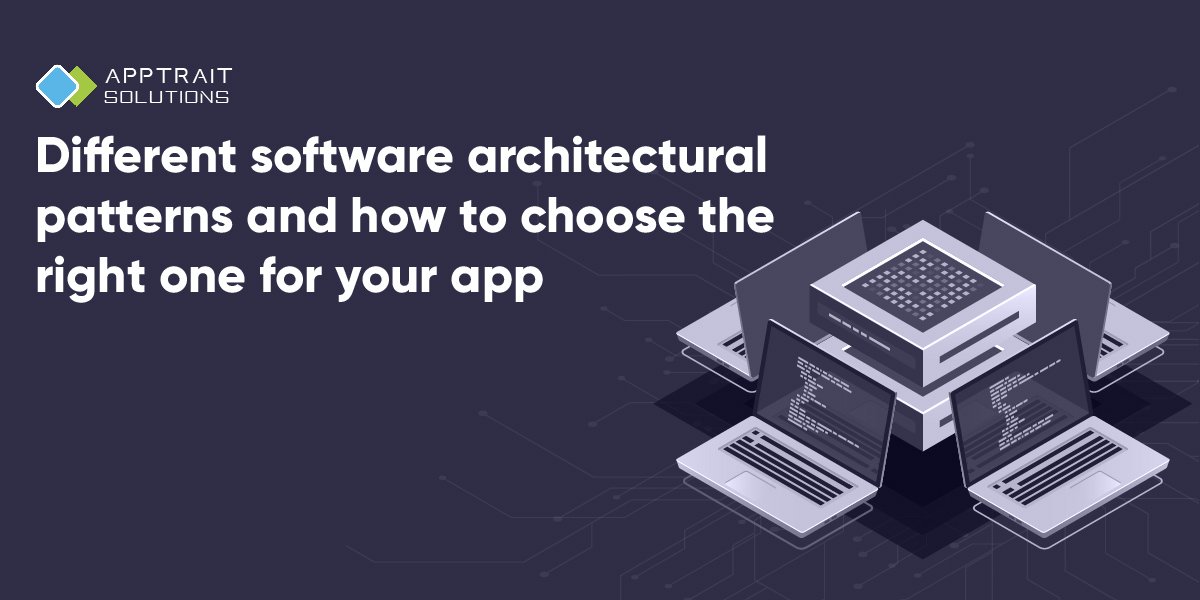Once you have an app idea and you planned to create an application, the next step is to decide the right software architecture for your mobile application.
Don’t know about software architectural patterns? Well, the architectural pattern is a readymade solution to a wide range of problems occurring in software architecture.
Let’s first list down the different architectural patterns.
- Layered pattern
- Client-server pattern
- Master-slave pattern
- Broker pattern
- Model-view-controller pattern
#1 Layered pattern
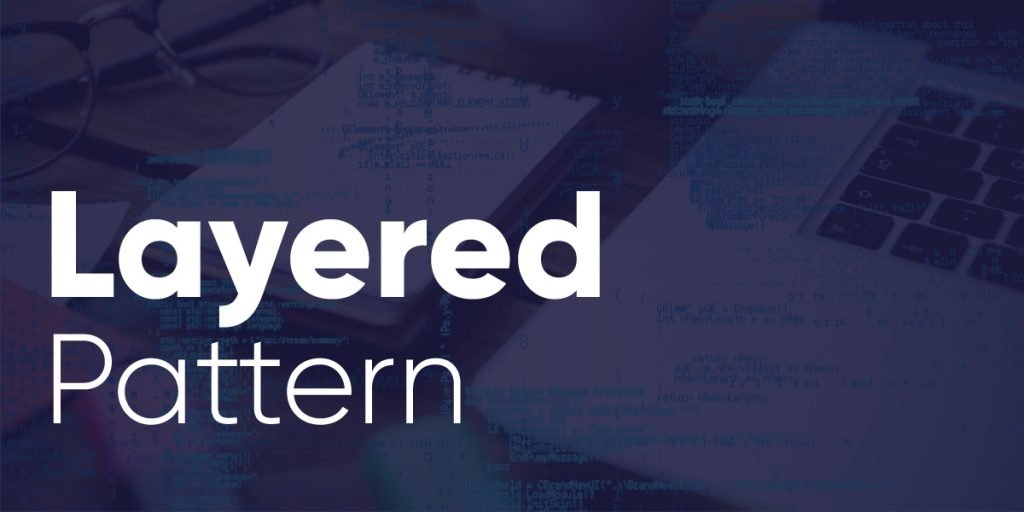
Layered architecture pattern is the most widely used pattern for medium-scale projects like desktop applications or E-commerce web applications. As the name suggests this pattern components are divided into different layers and each layer is responsible for a particular task. Each layer has a specific role for which it will be responsible. Most of the scenarios, it is divided under below 4 layers
- UI layer or presentation layer
- Service layer or application layer
- Domain layer or business logic layer
- Persistence layer or data access layer
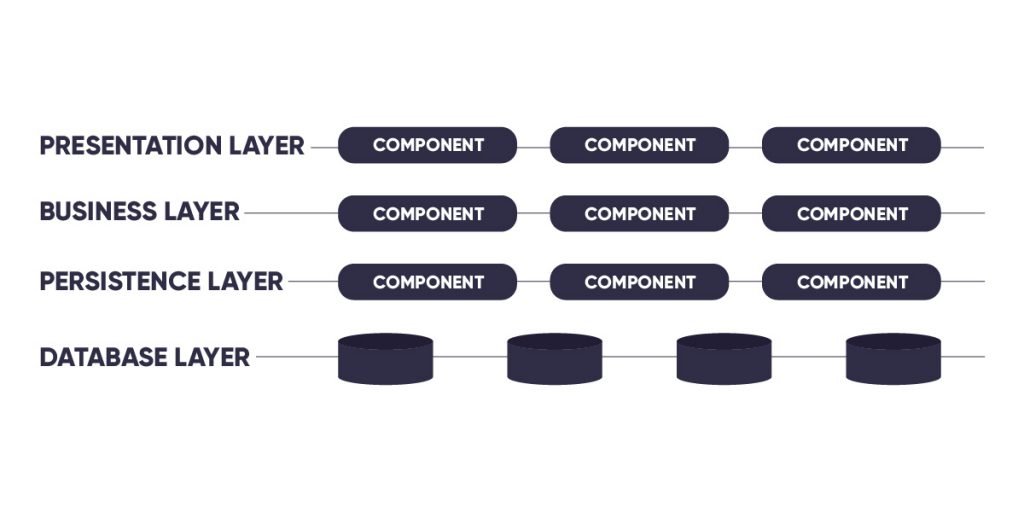
A layered architecture pattern is suitable for
- Small or medium-sized apps should be developed quickly.
- Large-scale applications like enterprise or business apps require minor IT departments and processes.
#2. Client-server pattern

As the name suggests, the client-server pattern is divided into 2 modules, a server and clients. The client can be single or multiple but there will be a single server that attends all the client’s requests.
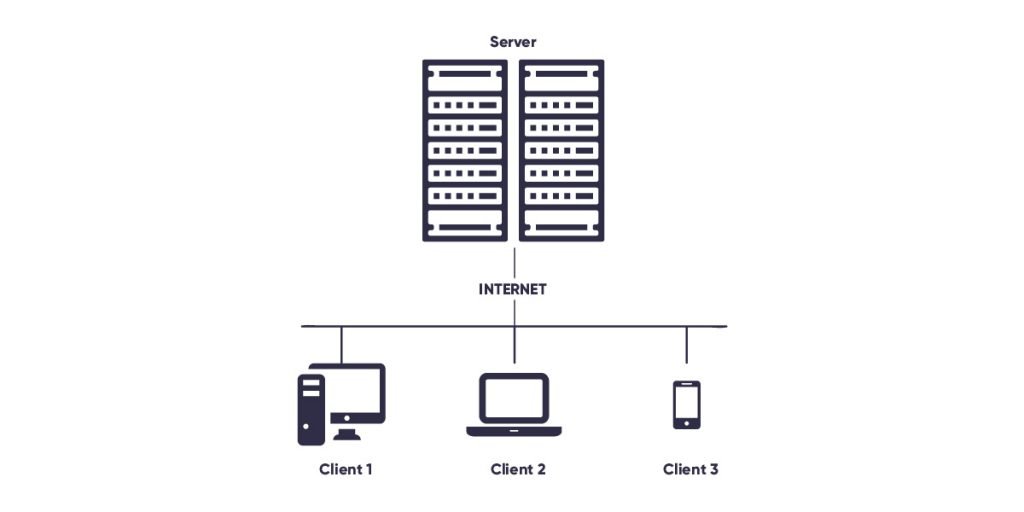
Let’s take an example to get more idea about this pattern. When a bank customer accesses the bank services either via mobile or browser or via tablet, there will be a single server that accepts all the requests and attends to the customers. The client-server pattern is suitable for
- Online applications like email, banking, or file sharing like Google Drive.
Also Read, What is Domain Authority and How to Increase It?
#3. Master-slave pattern
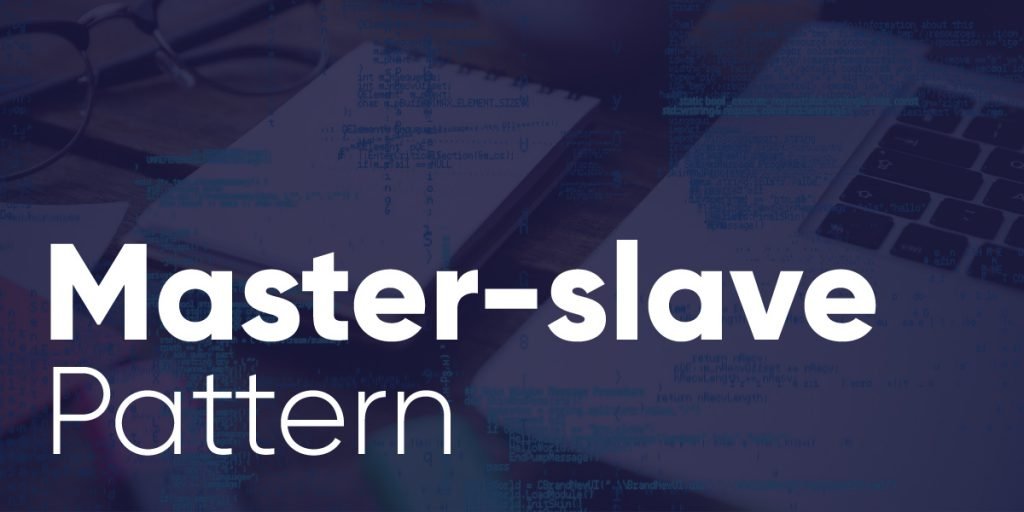
It is similar to the client-server pattern, the master-slave pattern is divided into 2 modules called master and slave. There could be one or multiple slaves but there will be a single master. The role of the master is to distribute work among the workers and calculate the final result from the results returned by slaves.
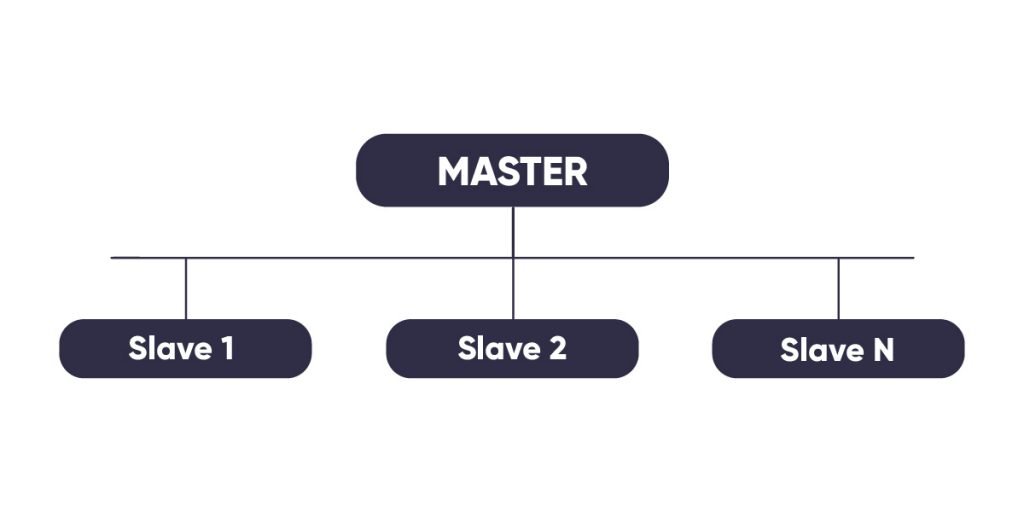
This pattern is very advantageous when creating multi-task applications.
The master-slave pattern is suitable for
- Developing multi-threaded applications like messaging apps
#4. Broker pattern

A broker pattern is a structured distributed system in which the components communicate broker(remote service invocation). A broker component is responsible for all communication between the client and the server. A broker communicates with the server about the requests from the client and also returns the result from the server to the client.
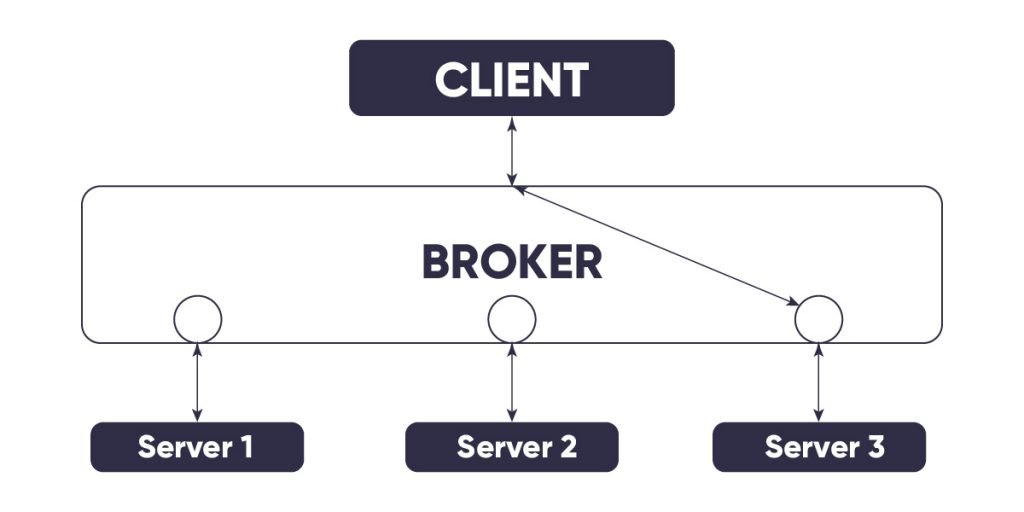
A simple example is when we develop APIs during a mobile app development project and the API acts as a broker that passes the data/request between client-server and server-client.
Broker pattern is suitable for
- Messaging apps (Chat app development)
#5. Model-view-controller pattern

Model view controller pattern which is widely known as MVC pattern. It is divided into 3 different modules Model, View, and Controller.
- The model is responsible for core functionality and transmits the data from or to the database.
- View is responsible for displaying the content to users.
- The controller is responsible for handling user input performing the actions using the model and displaying information to users using the view.
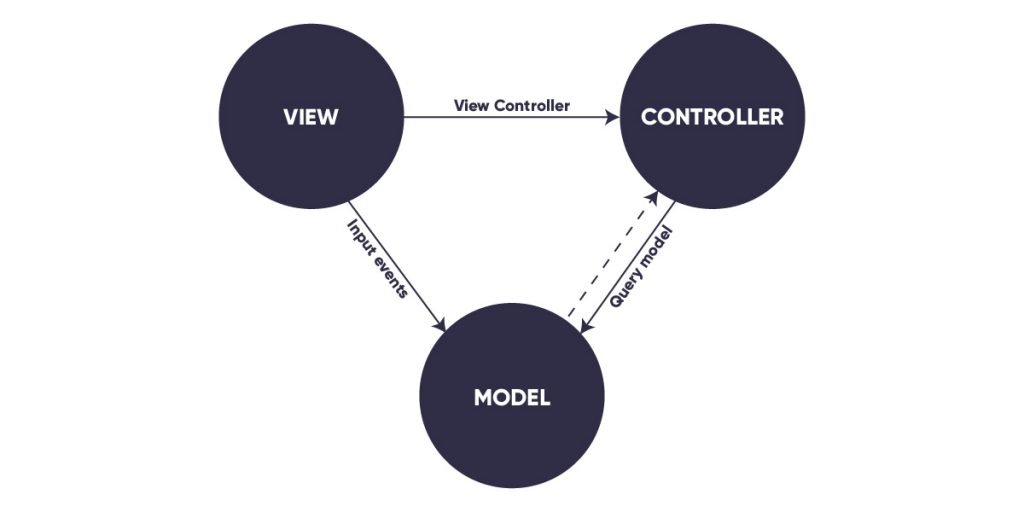
MVC pattern is suitable for
- The medium or large application uses the MVC architecture. MVC pattern is mostly used in the mobile app development process.
We are among the top software developers and we love to help to decide the best software architecture patterns for your next app development project. We best mobile app development company giving you quality software architecture patterns.


